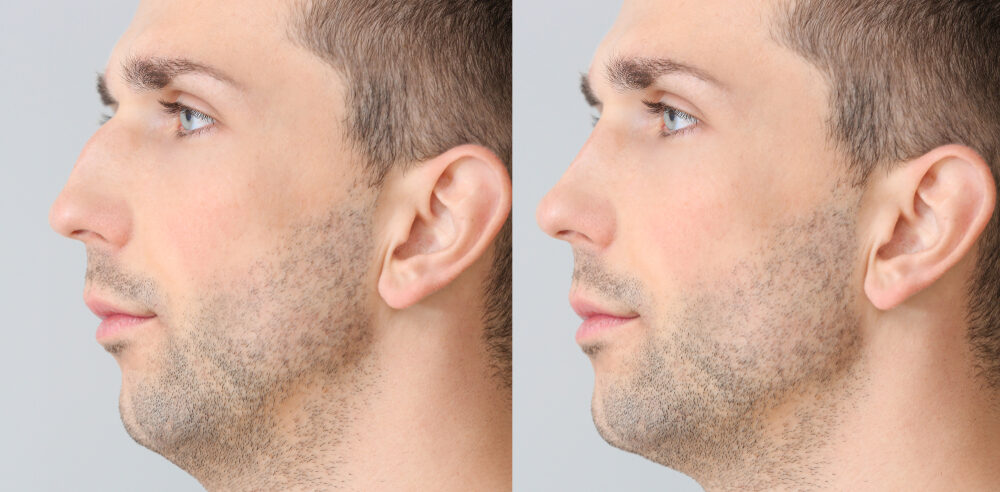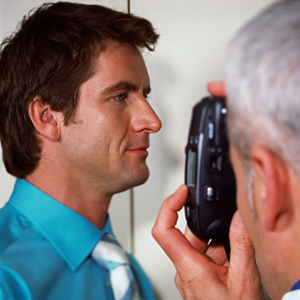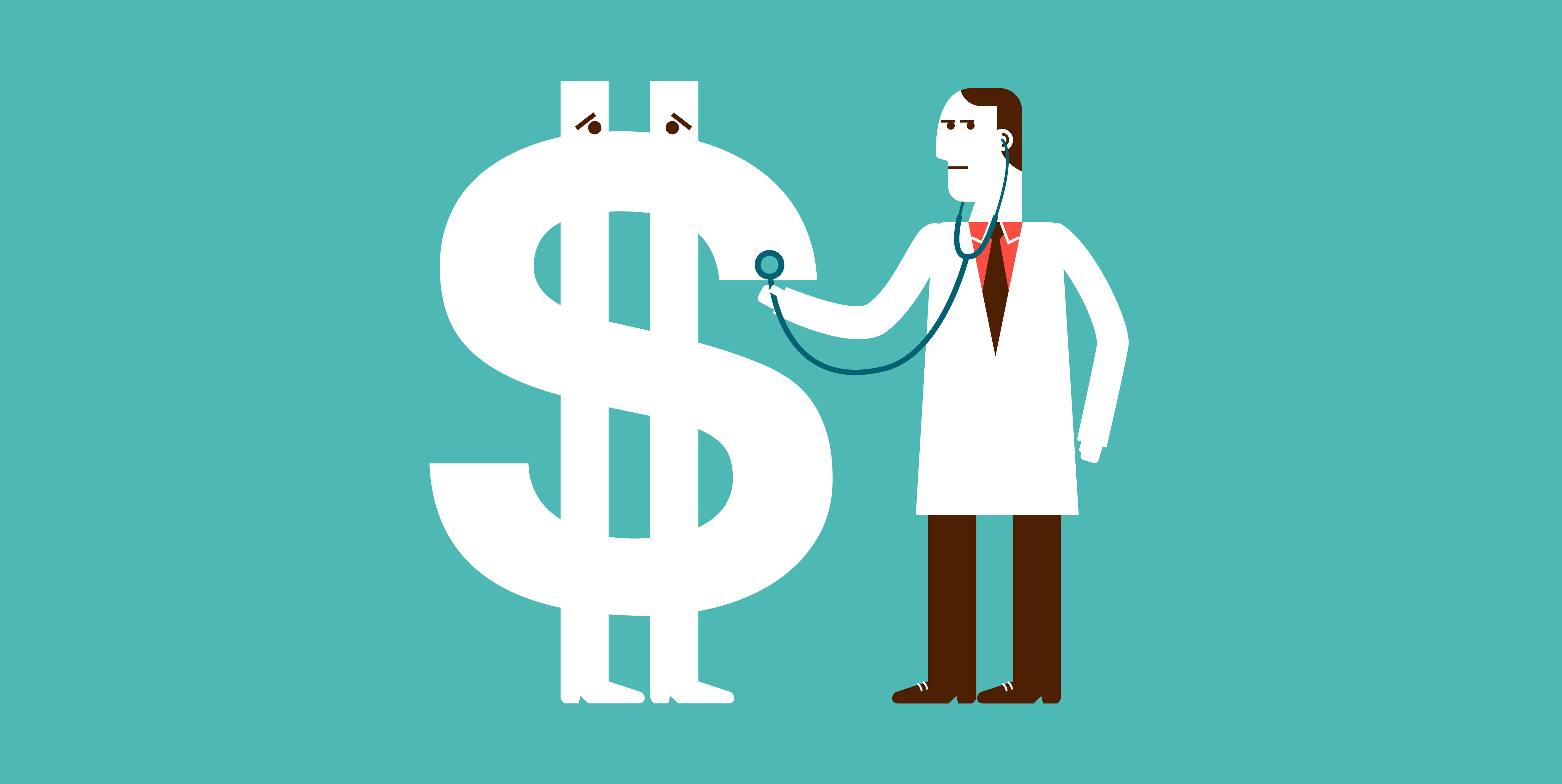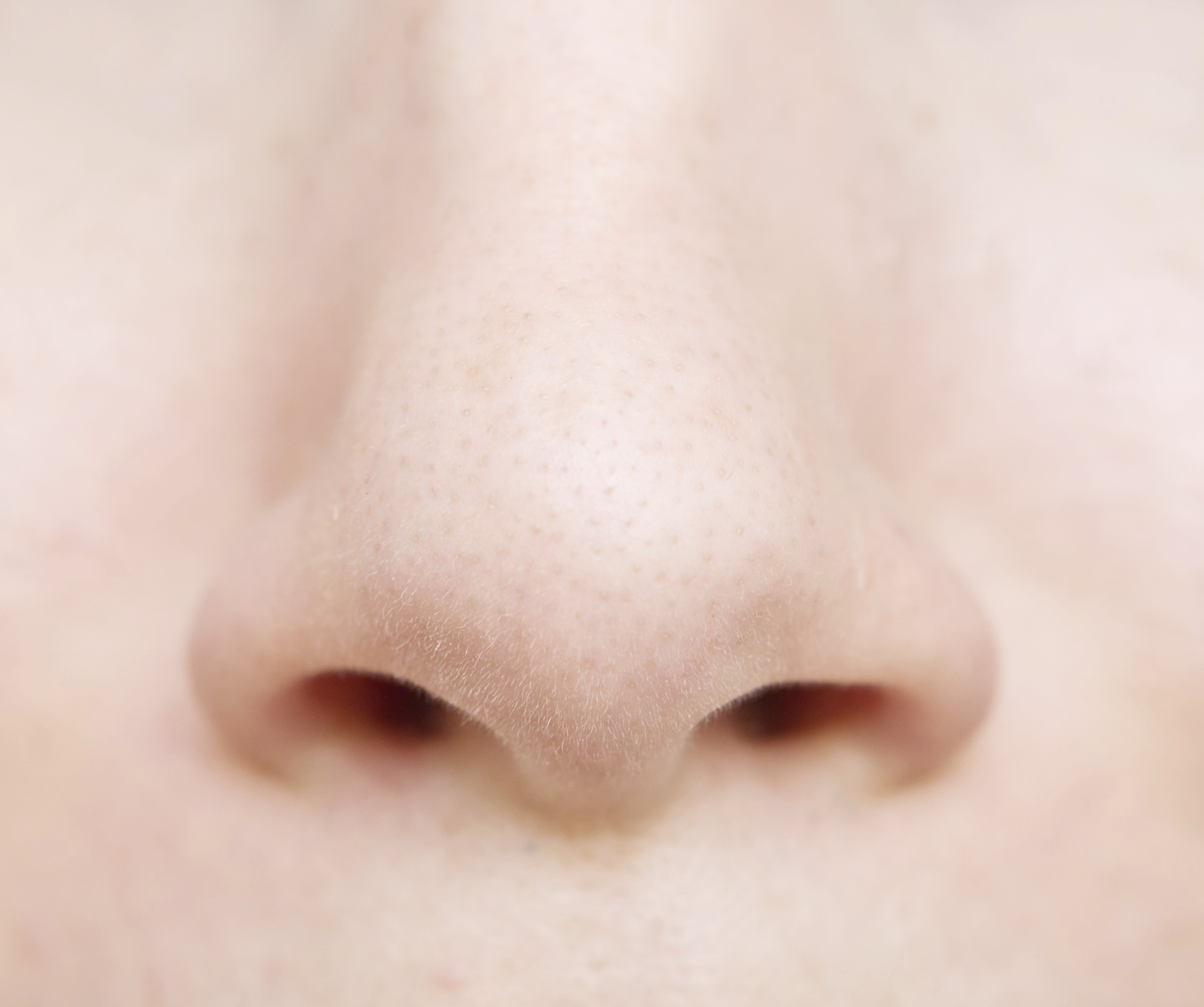Rhinoplasty Surgery
-
Written by Andrew Proulx, MD | Last updated 10/17/2023
- Overview
Overview
What is rhinoplasty?
Are you unhappy with the current shape, size or appearance of your nose? If yes, you may be an ideal candidate for rhinoplasty. Rhinoplasty may be performed for aesthetic reasons or for reconstructive purposes following trauma, developmental defects, or skin cancer.
During rhinoplasty, the bone, cartilage, and other tissues in the nose are reshaped to create the desired appearance or functionality.

Rhinoplasty Before and After Photo
Cost of rhinoplasty
The average cost of rhinoplasty is $5,482 according to the American Society of Plastic Surgeons (ASPS), however this only includes the surgeon’s fee. There are several other factors that may be involved with your procedure. The following are some of the most common factors that can influence the total cost of your surgery.
- Your Surgeon: These fees can vary greatly based on a variety of factors, such as the experience and reputation of your plastic surgeon. Highly renowned and in-demand surgeons with a track record delivering natural-looking results may charge a premium for their services. However, the extra expense may be worth it to ensure you achieve your desired aesthetic results.
- Anesthesia: The type of anesthesia used, the duration of your procedure, and the experience of your anesthesiologist can impact pricing. There are four main types of anesthesia, they include local, regional, sedation and general.
- Surgical Facility: In many cases, procedures are performed in a hospital or surgery center which charge fees to cover the use of their operating room as well as other associated services. In some cases, surgeons’ may have their own in-office surgical suite which can help reduce the overall expenses. To ensure a safe experience, check to see if your surgical facility is certified by the Accreditation Associations for Ambulatory Health Care (AAAHC).
- Geographic Location: The average cost for medical services can differ from one geographic region to another. In general, urban locations tend to have higher fees compared to rural areas. To get a general idea of prices for various medical procedures in your local area, you can use the Healthcare Blue Book, which functions similarly to Kelley Blue Book for estimating car prices.
- Procedure Details: Factors such as the surgical technique used by your surgeon, difficulty of your procedure, and the length of time to complete the surgery are taken into consideration when determining cost.
- Medical Care: This includes pre and post operative consultations, medical tests, surgical garments, medications, and other treatment related services.
- Added Procedures: Your overall cost may be higher if you’re considering having other procedures along with your rhinoplasty such as chin augmentation or a neck lift. However, combining procedures does offer some potential cost savings rather than having them done separately.
- Insurance: In certain cases, your procedure may be covered by insurance if it is deemed medically necessary. In these cases, a portion of the procedure may be covered. It’s important to keep in mind, coverage can vary, and specific criteria must be met to qualify.
When taking all these factors into consideration, the total cost of rhinoplasty can range from $5,000 to $15,000.
If you’re considering rhinoplasty, schedule a consultation with a board-certified plastic surgeon near you. During a consultation, you can discuss your aesthetic goals and obtain a better understanding of the specific costs involved.
Is the cost covered by insurance?
In general, rhinoplasty is considered an elective or cosmetic procedure and most insurance plans do not cover the cost. Insurance companies typically view rhinoplasty as a procedure performed for aesthetic purposes rather than medical necessity.
However, there are some cases where insurance may provide coverage, such as:
- Functional rhinoplasty: If the rhinoplasty is performed to correct a functional issue, such as improving breathing difficulties caused by a deviated septum or repairing nasal trauma, insurance may cover a portion or all of the procedure. Documentation and evidence of the functional impairment are usually required.
- Post-traumatic rhinoplasty: If the rhinoplasty is necessary to correct deformities or functional problems resulting from a recent accident or injury, insurance may cover the procedure. Again, proper documentation and evidence will be needed to support the claim.
Check with your insurance provider about the specifics of your policy. Your plastic surgeon’s office can also assist you in obtaining any necessary pre-authorization and documentation to submit to your insurance company.
Are you a candidate?
In most cases, rhinoplasty patients should be at least 18 years old so that the nose can fully develop. However, younger patients may undergo rhinoplasty surgery in the case of birth defects or structural damage.

In general, you may be a good candidate if your:
- Facial growth is complete
- In good overall health
- A non-smoker
- Realistic expectations about your results
One of the most important factors to a successful rhinoplasty result is the thickness of the skin covering the nose. In patients with thin skin, comparably minor corrections in the underlying bone or cartilage create significant visual changes. In patients with thicker skin, the same changes may have less noticeable results.
What concerns can it address?
Some of the most common complaints from people considering rhinoplasty are:
- Nose is too thick
- Nose is too thin
- Tip is too pointy
- Tip is upturned
- Nostrils are too wide or flared
- A bump on the bridge
- Nose bends to the left or right or is not symmetrical
In addition to these cosmetic conditions, rhinoplasty may be used to correct a deviated septum, which often contributes to sleep apnea. Rhinoplasty surgery is also used to repair damage caused by an injury, accident, or birth defect.
What to know beforehand
Today’s rhinoplasty is now more predictable, more accurate, and more effective than at any other time in its history. With the right combination of surgical skill and favorable tissue, cosmetic rhinoplasty can produce a naturally beautiful nose that will flatter the face and last a lifetime.
It is important to educate yourself and have realistic expectations before you undergo surgery. These are some things rhinoplasty patients wish they had known beforehand:
- There’s a big distinction between septoplasty and rhinoplasty. The term “nose job” conflates these two separate procedures. A deviated septum is a condition where the bone and cartilage that separate the nasal cavity is off-center or crooked. Septoplasty is an internal surgery that straightens the septum and helps alleviate any breathing issues stemming from blockage of the nasal passages.
- Rhinoplasty can be performed when the nose has completed 90% of its growth, which can occur as early as age 15 or 16 in boys and 13 or 14 in girls however parental consent is required for patients under the age of 18.
- There are non-surgical options. Rhinoplasty surgery is the best way to make long-lasting changes to your nose. However, if you are only seeking subtle changes, there may be a non-surgical solution. Dermal fillers like Restylane, Juvederm and Radiesse can help with minor issues including small humps, bumps, or slight asymmetry. While non-surgical options are associated with minimal discomfort, results are temporary.
- Rhinoplasty is among the most difficult of all cosmetic surgeries. Poor surgical technique can lead to permanent deformity, so it is important to choose your surgeon carefully.
- No rhinoplasty result is ever absolutely perfect. An accomplished surgeon who specializes in rhinoplasty can deliver exceptional results, but without experience, artistic skill and technical expertise, a good cosmetic outcome is all but impossible.
- One size does not fit all. Although you may desire a specific style, a nose that looks great on someone else may look awkward on you.
- Great surgical skills alone do not guarantee a good outcome. Good tissue and favorable healing responses are also necessary for a successful rhinoplasty. Weak cartilage, poor healing ability, and thin skin can negatively affect even the most skillful surgery.
- Young adults have the best prognosis. All other factors being equal, a young individual with a smooth, clear complexion, firm nasal cartilage, forgiving skin, and good overall health will have the best prognosis for a favorable rhinoplasty outcome.
- Final results may not be apparent for 12 months. In most cases, post-surgical swelling will distort the nose for several months after surgery. Even good results may look disappointing at first. It can take a year or longer to see your final results.
Procedure options
Rhinoplasty procedures can include the removal of bone, cartilage, or the addition of synthetic tissues, to increase or decrease the size of various elements of the nose. The visual effects may be subtle or dramatic, depending on your needs and desires.
The exact techniques used for your procedure depends on the current shape and size of your nose and the desired results; no two rhinoplasty procedures are exactly the same.
It helps to know some of the official terms used by surgeons for rhinoplasty. Here’s a list of four of them:
- Open method: With the open method, the surgeon makes an incision in the columella (the bridge of tissue that separates the nostrils) in order to gain access to the underlying cartilage and tissue of the nose. Additional incisions made be made inside the nose.
- Closed method: The closed (or endonasal) method is a less invasive type of rhinoplasty that involves making an incision inside the nose and working entirely beneath the skin of the nose with limited visual access.
- Non-surgical: The term “non-surgical” typically implies the use of an injectable dermal filler to temporarily correct small imperfections.
- Nasal implants: Involves the use of silicone implants to help alter the shape and size of nose.
Procedure overview
The following provides a general overview of how rhinoplasty procedures are typically performed.
- Anesthesia: Prior to surgery, you will be administered general anesthesia to ensure your comfort throughout the procedure.
- Incision: Rhinoplasty can be performed using either an open or closed approach. In a closed rhinoplasty, the incisions are made within the nose leaving no visible external scars. An open rhinoplasty involves a small incision on the columella, the tissue between the nostrils, allowing for better access and visibility during the surgery.
- Reshaping the Nasal Structure: After the incisions are made, the surgeon carefully lifts the nasal skin to access the underlying bone and cartilage structure. The specific technique used will depend on each patients unique needs and desired outcome. The surgeon may remove or rearrange cartilage, augment the nasal structure with grafts, or reduce excess bone or cartilage to achieve the desired cosmetic result.
- Correcting Deviated Septum or Functional Issues: If you have a deviated septum or other functional issues that affect breathing, the surgeon will address these during the procedure. They may straighten or reposition the septum, repair nasal valve collapse, or improve airway passages to enhance nasal function.
- Closing Incisions: After the necessary modifications have been made the surgeon will close the incisions using fine sutures. If external incisions were made, they will be closed with sutures that are usually removed within a week or two. Internal incisions will naturally dissolve over time.
- Dressing & Splints: To protect the newly reshaped nose, the surgeon will apply a nasal splint or cast. This splint helps maintain the new nasal shape and provides support during the initial healing phase.
- Recovery: Following the surgery, you will be taken to a recovery area where you will be monitored as you wake up from anesthesia.
Rhinoplasty Recovery
Recovering from rhinoplasty takes about two to three weeks. Most patients return to work after one week.
During the first one to two months, it’s important to avoid strenuous activities, including sports that may cause trauma to the nose. This includes baseball, soccer, basketball, weightlifting, and other similar sports. A trauma to your nose during the recovery time can end up causing your new nose to deviate from its proper location.
When to expect results
Although initial results will be visible within a few weeks of your surgery, it will take a 6-12 months or more before the nose is fully stabilized and all swelling has subsided.
How long will results last?
Once the tissue has stabilized, the results of rhinoplasty are relatively permanent.
Tips for choosing a plastic surgeon
To attain the desired results, it is important to carefully select your rhinoplasty surgeon. The surgeon you choose, along with their recommended surgical approach, significantly influences patient satisfaction. Seek out a surgeon with substantial experience in rhinoplasty specifically. Ensure that your surgeon is board-certified and holds membership in one or more of the following organizations:
- The American Board of Plastic Surgery
- American Academy of Facial Plastic and Reconstructive Surgery
- The American Society of Plastic Surgeons
- The Aesthetic Society
EnhanceMyself.com relies on sources such as professional medical organizations, government agencies, academic institutions, and peer-reviewed scientific journals to write it’s articles. Learn more about how we ensure our content is accurate, in-depth, and unbiased by reading our editorial guidelines.
*Medical Disclaimer: This website does not provide medical advice. Read more.


